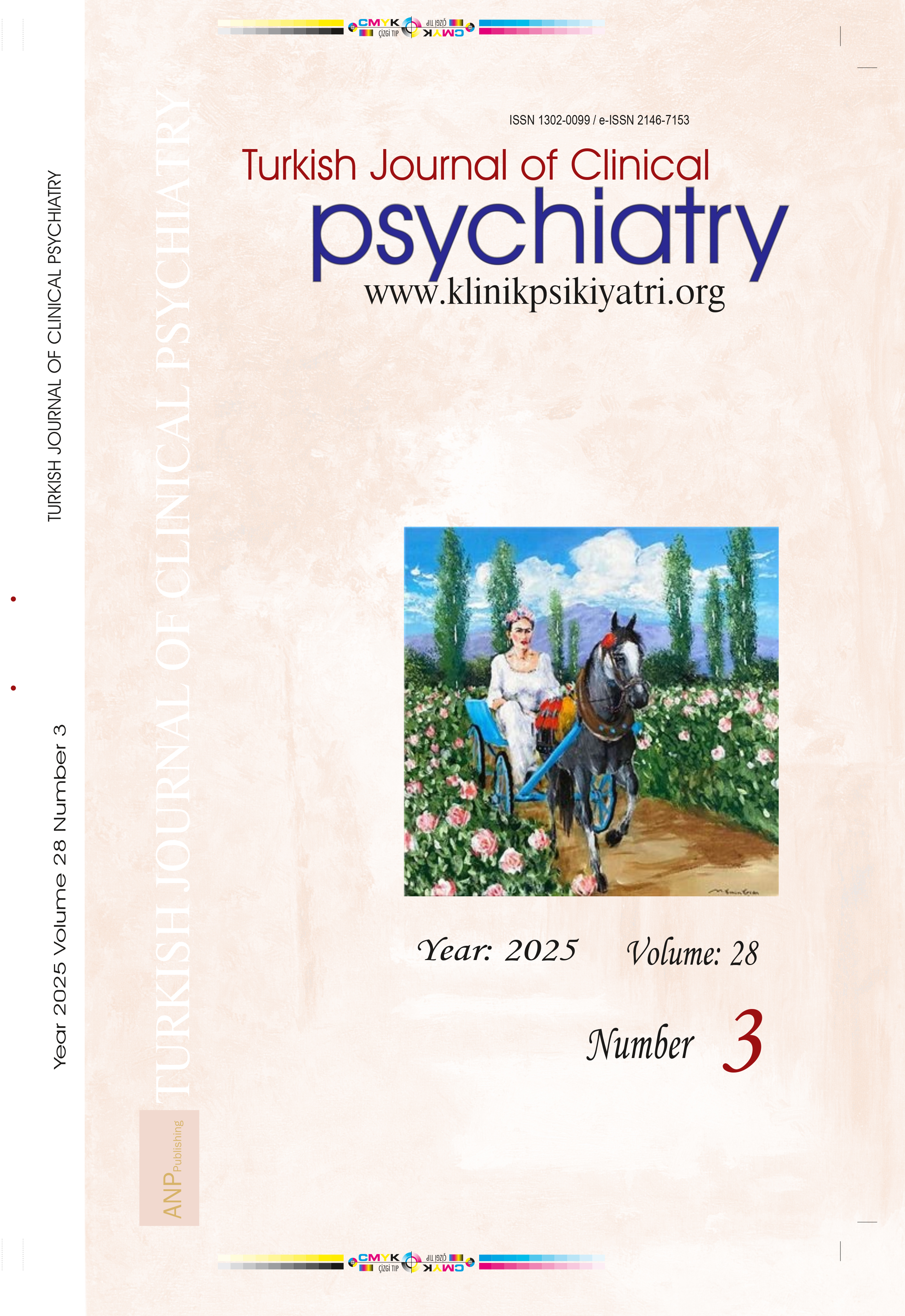





Risk factors associated with disease severity in autism spectrum disorder
Duygu Karagoz, Nilfer Sahin, Raziye Ulku KicaliMuğla Training And Research Hospital, Department Of Child And Adolescent Mental Health And Diseases, Muğla, TurkeyINTRODUCTION: This study aimed to evaluate prenatal-perinatal-postnatal risk factors, which are thought to have a role in the etiology of autism spectrum disorder, according to autism severity and to evaluate the relationship between maternal stress during pregnancy and the age difference between parents.
METHODS: 100 children between the ages of 18-72 months who were diagnosed with ASD according to DSM-V diagnostic criteria and were followed up were included in the study. By evaluating the clinical severity of autism with the childhood autism rating scale, children diagnosed with ASD were divided into two subgroups according to clinical severity. Sociodemographic data and risk factors were recorded in the clinical data form, and the characteristics of the two groups were compared. Birtchnell Spouse Evaluation Scale-female form was applied to mothers to evaluate marital-relationship problems.
RESULTS: In our study, it was determined that premature birth and regression history were more common in the severe autism group than in the mild-moderate autism group (p=0.007, p=0.025). No significant relationship was found between the difference between the ages of the mother and father and the subscales of the Birtchnell Spouse Rating Scale. It was found that the disconnection subscale of the Birtchnell Spouse Assessment Scale was significantly higher in the severe autism group.
DISCUSSION AND CONCLUSION: Our study is one of the few studies conducted in this field and aims to contribute to the identification of preventable risk factors of autism. In the future, there is a need to confirm the data with larger studies in which maternal stress risk factors are also evaluated in the postnatal period and include other maternal stress factors besides marriage-relationship problems.
Otizm spektrum bozukluğunda hastalık şiddeti ile ilişkili risk faktörleri
Duygu Karagoz, Nilfer Sahin, Raziye Ulku KicaliMuğla Eğitim ve Araştırma Hastanesi, Çocuk ve Ergen Ruh Sağlığı ve Hastalıkları Anabilim Dalı, Muğla, TürkiyeGİRİŞ ve AMAÇ: Bu çalışmada otizm spektrum bozukluğu etiyolojisinde rolü olabileceği düşünülen prenatal-perinatal-postnatal risk faktörlerinin otizm şiddetine göre değerlendirilmesi ve maternal stresin ebeveynler arası yaş farkı ile ilişkisini değerlendirmek amaçlanmıştır.
YÖNTEM ve GEREÇLER: Çalışmaya DSM-V tanı ölçütlerine göre OSB tanısı alan ve izlemi yapılan 18-72 ay aralığındaki 100 çocuk alınmıştır. Çocukluk otizmi derecelendirme ölçeği ile otizmin klinik şiddeti değerlendirilerek klinik şiddete göre OSB tanılı çocuklar iki alt gruba ayrılmıştır. Sosyodemografik veriler ve risk faktörleri klinik veri formuna işlenmiş, iki grubun özellikleri karşılaştırılmıştır. Evlilik-ilişki sorunlarını değerlendirmek için annelere Birtchnell Eş Değerlendirme ölçeği-kadın formu uygulanmıştır.
BULGULAR: Çalışmamızda ağır düzeyde otizm grubunda prematüre doğum şeklinin ve regresyon öyküsünün hafif-orta şiddetli otizm grubuna göre daha fazla olduğu tespit edilmiştir (p=0.007, p=0.025). Anne ve baba yaşları arasındaki fark ile Birtchnell Eş Değerlendirme ölçeği alt boyutları arasında anlamlı bir ilişki saptanmamıştır. Ağır düzeyde otizm grubunda Birtchnell Eş Değerlendirme ölçeği kopukluk alt boyutunun anlamlı derece daha yüksek olduğu (p=0.045) saptanmıştır.
TARTIŞMA ve SONUÇ: Çalışmamız bu alanda yapılmış az sayıdaki çalışmalardan biri olup otizmin önlenebilir risk faktörlerinin belirlenmesine katkı sağlanması hedeflenmiştir. Gelecekte maternal stres risk faktörlerinin postnatal dönemde de değerlendirildiği, evlilik-ilişki sorunları dışında diğer maternal stres faktörlerini de kapsayan daha geniş çalışmalarla verilerin doğrulanmasına ihtiyaç vardır.
Manuscript Language: Turkish
(514 downloaded)










